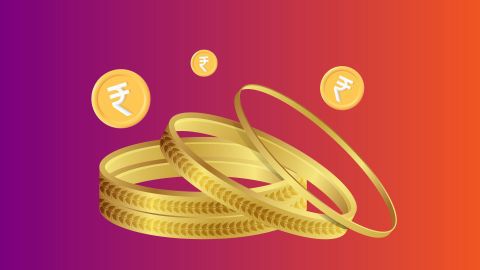- Economic stability: Economic growth or recession impacts gold demand.
- Inflation rates: Higher inflation increases gold’s appeal as a hedge.
- Interest rates: Lower rates make gold more attractive; higher rates do the opposite.
- US dollar strength: A stronger dollar typically lowers gold prices.
- Geopolitical tensions: Conflicts and political instability boost gold’s safe-haven demand.
- Supply and demand: Changes in mining output and consumer demand affect prices.
- Central bank policies: Gold reserve changes by central banks influence prices.
- Market sentiment: Investor behaviour and speculative activities play a role.
Gold price analysis: Trends over the past 12 months
Over the past 12 months, gold prices have shown volatility. Early in the period, prices surged due to economic uncertainties and inflation fears. Mid-year, as global economies began stabilising and interest rates rose, gold prices faced downward pressure.
However, geopolitical tensions and fluctuating currency values caused intermittent price spikes. Overall, the trend has been influenced by a mix of inflationary pressures, central bank policies, and market sentiment, reflecting the ongoing global economic recovery and investor caution.
Impact of 1-year gold price trend on gold loan terms
The 1-year gold price trend significantly impacts gold loan terms and conditions. As gold prices increased by approximately 8% over the past year, the value of collateral offered for gold loans has risen correspondingly. This increase allows borrowers to secure larger loan amounts against their gold assets, enhancing the attractiveness of gold loans.
Additionally, the rise in gold prices typically leads to more favourable gold loan interest rates as lenders perceive a lower risk due to the higher collateral value. However, the recent price fluctuations also mean that lenders may adopt more conservative loan-to-value (LTV) ratios to mitigate potential risks associated with market volatility.
Maximising gold loan benefits during price fluctuations
To maximize the benefits of gold loans during price fluctuations, borrowers should monitor gold prices closely and time their loans when prices are high to secure larger loan amounts.
Additionally, choosing lenders offering flexible repayment options and competitive gold loan interest rates is crucial. Understanding the market and acting strategically can help borrowers make the most of the benefits of gold loans.
Interest rate trends for gold loans amidst 1-year gold price trend
Over the past year, gold loan interest rates have closely followed gold price trends. As gold prices surged early in the year due to economic uncertainties and inflation fears, lenders offered competitive interest rates to attract borrowers leveraging high gold values.
However, as gold prices fluctuated and interest rates rose mid-year due to economic stabilization, gold loan interest rates also increased to mitigate lender risk. This trend reflects lenders' need to balance competitive loan offerings with the inherent risk of gold price volatility, impacting borrower decisions and loan accessibility.






